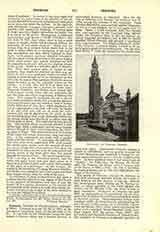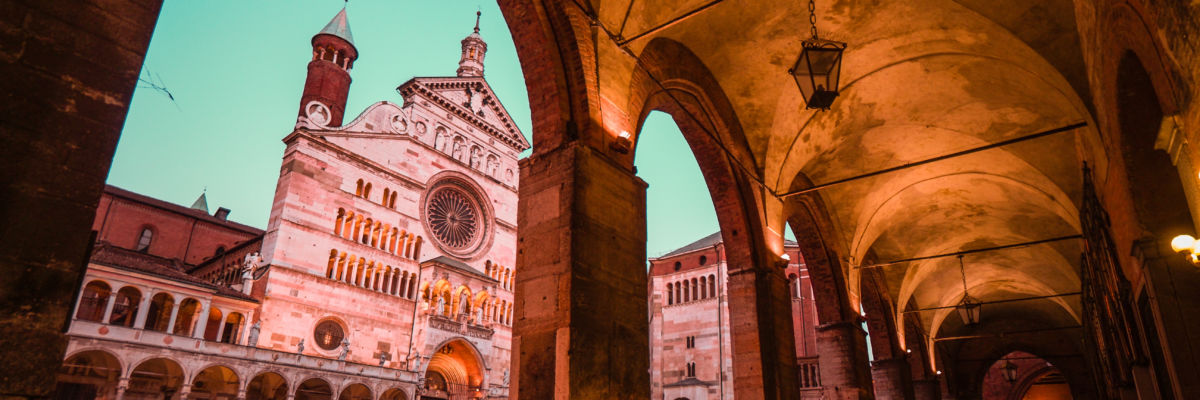

Cremona, Diocese of (CREMONENSIS), suffragan of Milan. Cremona is a city (31,661 in 1901) in the Province of Lombardy, Italy, on the left bank of the Po. It was built by the Cenomanni Gauls, but later became a Roman colony and a frontier fortress; itsuccumbed, however, to Hannibal. After the victory of Octavian over Antony, the territory was divided among the veterans of the conqueror. Caius Vitellius defended it unsuccessfully against Vespasian, by whom it was pillaged, but it rose again from its ruins. About A.D. 600 Cremona, until then Byzantine, was captured by the Lombard king, Agilulf. Under the Emperors Otto (I—III) its bishops acquired temporal sovereignty, but in 990 the people expelled Bishop Olderico and adopted a republican form of government. The Emperor Henry IV (1056-1106), however, confirmed Bishop Landulf in all imperial grants made to his predecessors. On the other hand Henry V (1106-25) restored to the people their communal rights. Thenceforth Cremona became a citadel of Ghibellinism and was greatly favored by Frederic Barbarossa and Frederick II, though for the same reason frequently at war with the neighboring cities. In later medieval times it had many lords or “tyrants”, the Pallavicini, the Bovara, the Cavalcab(), the Visconti, the Sforza, until it became part of the Duchy of Milan (1328). In 1702 it was taken by imperial troops, and in 1796 and 1800 fell into the hands of the French.
The people of Cremona venerate St. Sabinus as their first missionary and first bishop; he is said to have lived in the first century of our era. Among the better-known early bishops are St. Syrinus (c. 340), a valiant apologist of the Faith against the Arians, and St. Silvinus (733); the latter is held in great veneration. Liudprand of Cremona was sent (946) as ambassador to Constantinople by the Emperor Otto II, and is the most famous historical writer of the tenth century. Other important bishops were Gualtiero (1096), in whose time the cathedral was begun; Sicardo (1185), author of a chronicle; Cacciaconte da Somma (1261), under whom was erected the belfry of the cathedral; Nicolo Sfondrati (1560), later Pope Gregory XIV; his nephew Paolo (1607); also the zealous and charitable Omobono di Offredi (1791). The cathedral of Cremona is a splendid specimen of Romanesque architecture, dates from the beginning of the twelfth century, and is noted for its facade in alternate courses of red and white marble. It possesses many famous paintings and sculptures. Its two marble pulpits were brought thither from the suppressed church of the Olivetans. Near the cathedral is the baptistery (1167), surrounded by ranges of narrow Lombard arches, and bearing aloft an octagonal cupola. The famous brick campanile, known as the Torrazzo, built in 1283 as a peace monument, is 396 feet high and is said to be the tallest in Italy. An ancient saying runs: Unus Petrus in Roma, una turris in Cremona (One Peter in Rome, one Tower in Cremona). Other noteworthy churches are those of Sant’ Agata and Sant’ Agostino, the latter externally Gothic, while its interior is Renaissance. San Pietro and San Michele are believed to date from the time of the Lombard Queen Theodolinda (c. 590). There are many industries at Cremona, especially silk manufactures; in the history of music it is known as the birth-place of four famous makers of violins: Amati, Guarneri, Stradivari, and Malpighi.
The population of the diocese is 350,000; it has 345 parishes, 530 churches and chapels, 536 secular and 38 regular clergy, 9 houses of religious men, and 77 of women. It has also 15 educational institutions.
U. BENIGNI


